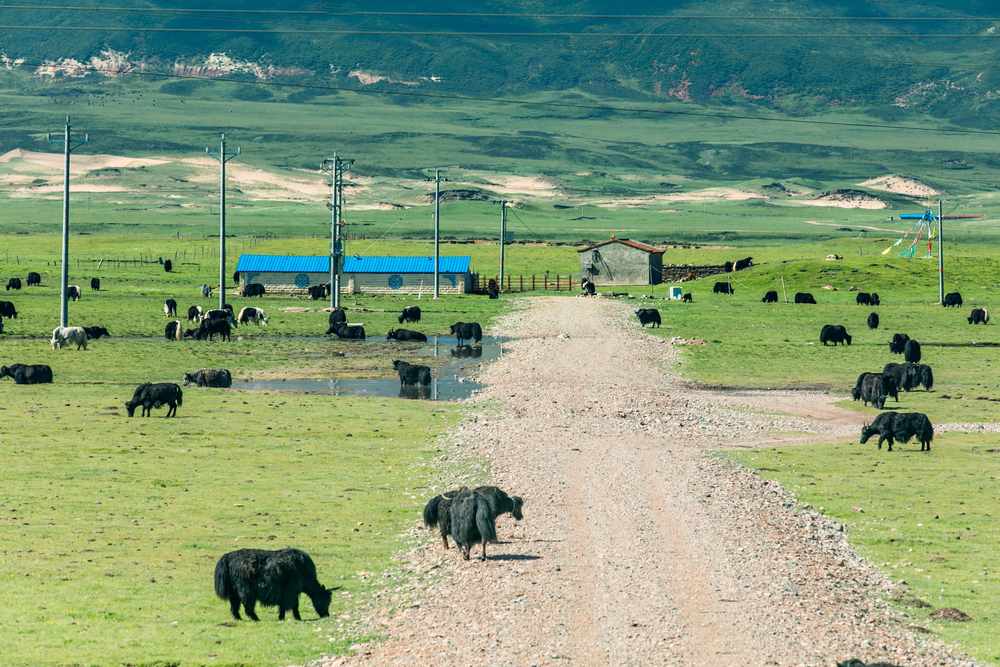If you are a complete beginner in the Share Market, here is a step by step guide to get in Nepal Share Market. Let's dive deeper into it. Stick with us till the end
Also see: 5 things to know before investing in Share Market
1. OPENING A DEMAT ACCOUNT
Opening a Demat account is the first step to get in Nepal Share Market. Dematerialized, shortened as DEMAT, is a special account used particularly to store any of the company shares that you own in dematerialized form. In a simple term, any physical copy of shares that you have or used to have is now digitally stored in a more secure and digital form, hence called ‘Dematerialized’. This DEMAT account will now hold all of your shares from various companies.
The process of opening the DEMAT account is very similar to that of a normal bank account. You can fill-up the form online or go to the bank to fill physical copy of the form.
Bear in mind, online form fill-up might be tedious and confusing for most people as you will have to provide additional scanned photos and documents.
The simple way is to visit the bank and fill up a form. You will require:
● 2 to 3 Passport size photos.
The only difference between Demat accounts and normal account is, Demat Account will hold all the information for debit and credit of all the shares you decide to sell or purchase.
How to open a DEMAT account?
Step 1. Select the Depository Participant (DP)
To open a DEMAT account at any bank is very simple, just select any one Depository Participant according to your interest. A Depository Participant can be a bank or a broker itself. Hence, instead of banks, you can directly open a Demat account at a broker's office from which you can easily buy and sell your shares in the future. There is a total of 78 licensed Depository Participants in Nepal. For more information, here is the full list of all Depository Participant (DP).
With the craze of IPO in the Nepali market, the ASBA charge for applying for IPO is also increasing. Make sure to check the ASBA charge before opening a Demat account. The price might vary between Rs 1 to more than Rs 10.
Step 2. Fill up the form for the Demat account
To open a Demat account you will need:
● 2-3 Passport-sized photograph
● PAN card number (if you have)
● Photocopy of Citizenship or passport (if you have) for verification
● Children also can have a Demat from their parents Citizenship and their birth certificate
● Don't forget to fill C-ASBA form to apply for the IPO shares online.
Step 3. Go through the Rules & Regulations
Share market is a very risky platform. Yes, you can earn money if invested wisely and patiently so, reading every rule and legal documents before committing is a wise decision for you and your family.
Step 4. Accessing Your Demat Account
After the submission of the form, you will receive a client ID and Demat account from the DP. You will need these login credentials to apply for the IPO share in Mero Share. Mero share is the official platform to apply for the IPO online.
Step 6. Maintenance Fee
After you have successfully set up your Demat account, make sure to renew every year, which will cost you around 100 for renewing Demat and 50 for Mero share
Step 7. Minimum shares
‘Minimum shares’ is the special term that means you can open a Demat account with 0 balance of shares. In other words, you don’t compulsorily apply for the share after having a Demat account. You can have 0 shares in your Demat account, just make sure to renew every year for validation.
What is ASBA and C-ASBA?
Applying for ASBA and C-ASBA is the second step to get in Nepal Share Market. ASBA – Application Supported by Blocked Amount, is the system that is responsible to block or withhold the amount that you apply for an IPO.
In Nepal normally ‘1-Kitta’ share will cost you Rs 100. So, if you apply for a’10-Kitta’ share, then a total of Rs 1000 will be blocked from your saving account until the IPO result(Allotment) is published. Once the result is published,
● you will get your blocked amount back if you don’t get the share within 3 days
● if you get the share, your amount will be transferred to ‘Demat Account’
Once the amount is transferred to the Demat account, you have to sell the share to get the money with the help of a broker.
C-ASBA is the updated and more optimized version of ASBA, which provides a more user-friendly and error-free service.
2. KNOW THE MARKET
The security board of Nepal, SEBON is the authoritative sole regulator of NEPSE, Nepal Share Exchange. You can visit the official website of SEBON daily to better understand how the share market operates. Before selling or buying the share in the secondary market, make sure to visit the Nepal Stock Exchange website to know the depth knowledge of current share value.
How to buy and sell share?
To buy or share shares, you must have a broker ID, which you will get after filling up a simple broker form. All the form fill-up process is quite similar as mentioned above. After filling up the form, you will get a broker ID from the broker office on your Gmail, so, make sure you have typed the right mailing address. After getting your broker ID go to NEPAL STOCK EXCHANGE TRADE MANAGEMENT SYSTEM. Remember to choose your broker number and sell or buy accordingly.
Types of share market | How to invest in Nepali share market?
1. Invest in IPO/FPOs
IPO (Initial public offering) is the public offering in which a company or an organization will sell parts of their share to the general public for the first time. When a company wants to invest more or need money for their business, they collect money from the citizens through IPO, which they invest in various sectors. There are nearly 40 lakh Demat accounts in Nepal, which means at least 30 lakh people will apply for every single IPO. This means people getting a share from the IPO is very rare. In general, out of 35 lakhs people, only a few thousand people get lucky.
IPO is the first step to enter the share market because the loss is very minimal. NIFRA was the first company to announce 80 million shares in Nepal. This is by far the most shares allocated to the general public. For the first time, every citizen who applied got at least 50 shares, some getting up to 60 shares. This was also the point when the Nepal Share Market exploded and many people started investing in IPO. Within months more than 10 lakhs Demat account was added.
FPO (Follow on Public Offer) is the process in which a company has already released IPO, but to diversify their equity base they again announce the public offering. Now, in FPO even mutual funds can bid including other individuals, qualified institutional buyers, and insurance companies. FPO is more diversified.
Why invest in IPO?
For any newcomer in the Nepali share market, investing in the IPO and FPO is the safest option to go after. Normally you incest one thousand and could get up to 6-7 thousand within a year. Sometimes the value might stick around 3000 rupees but there is hardly any loss. The major risk arises when you start investing in the secondary market, but of course the higher the risk, the higher the profit. To give an example, Nirmal Pradhan is known as the Badshah of the Nepali market, became a millionaire investing in shares.
2. Investing in Mutual funds
Investing in mutual funds is safer than IPO, the chances of getting a share are also high compared to IPO.
A mutual fund is an open-end investment fund that is managed, organized, and processed by experts in the share market. They collect the fun from the public and invest it in various sectors as per their expertise so the profit is almost guaranteed. If you have already entered the secondary market and IPO, then mutual share might not be the best option for you as the profit is very marginal.
For example, if you invest 2000 rupees in the mutual fund then in the next 6-7 years the maximum you could get is double, but that is extremely rare, so, you have to decide if a mutual fund is a right choice for you.
3. Invest in the secondary market
This is where the real business happens. Once you enter the secondary market, the first thing you should know is ‘RISK’.
But the interesting thing is ‘Where there is risk there is money, a lot of money!’
With the broker account, you can enter the secondary market. You can check the full list of licensed brokers in Nepal
The secondary market is all about buying and selling shares. You have to know basically everything about the share market before you invest big. In share market to things you should be familiar with ‘Bullish and Bearish trend’.
What is the Bullish trend in Share Market?
In the share market, a bullish trend is known as the upward trend where the stock keeps rising and reaches the all-time high very rapidly. This is where people get the maximum price of their share. Many people sell their share during bullish trends and get the maximum profit.
What is the Bearish trend in Share Market?
It’s the opposite of the Bullish trend, also known as the downward trend. The value of the share reaches the lowest point during this phase very rapidly. This is the time when newcomers get scared and nervous. But, one thing to know is bullish and bearish trend is normal in share market, it is the normal phenomena, which occurs every few years.
Is Nepal share market fair?
Bullish and Bearish is the phase where people become either rich or poor. People having depth knowledge of the share market can predict when the bullish and bearish trend will occur and invest accordingly. People having less knowledge start panic buying and selling causing them loss of millions. The question of whether the Nepal share market fair really depends on how well can you invest in the share market. Of course, people can break down the whole system with a great amount of buying and selling. If a particular share is bought in a large amount for the continuous day, its value might go up considerably. If you want to know how the share market can be manipulated, I highly suggest watching Scam 1992, which shows the dark side of the share market.
What is NEPSE market depth and How to check?
As mentioned above, market depth is all about demand and supply. If the particular share has a high demand and less supply, the price is bound to go up by a great margin and vice versa. You can see the top 5 buy and top 5 sells in the NEPAL STOCK EXCHANGE TRADE MANAGEMENT SYSTEM site before buying and selling shares which will help you decide the best time to buy and sell shares.
But keep in mind, you don’t have to buy 5 kilos of mangos if a person just bought 8 kilos of mangos. Not getting intimidated by the sudden growth of buying and selling is the most important part to know in the share market. Spend some time analyzing the stock exchange and you will get an idea of what to buy and hen to buy. The same process can be applied while selling.



